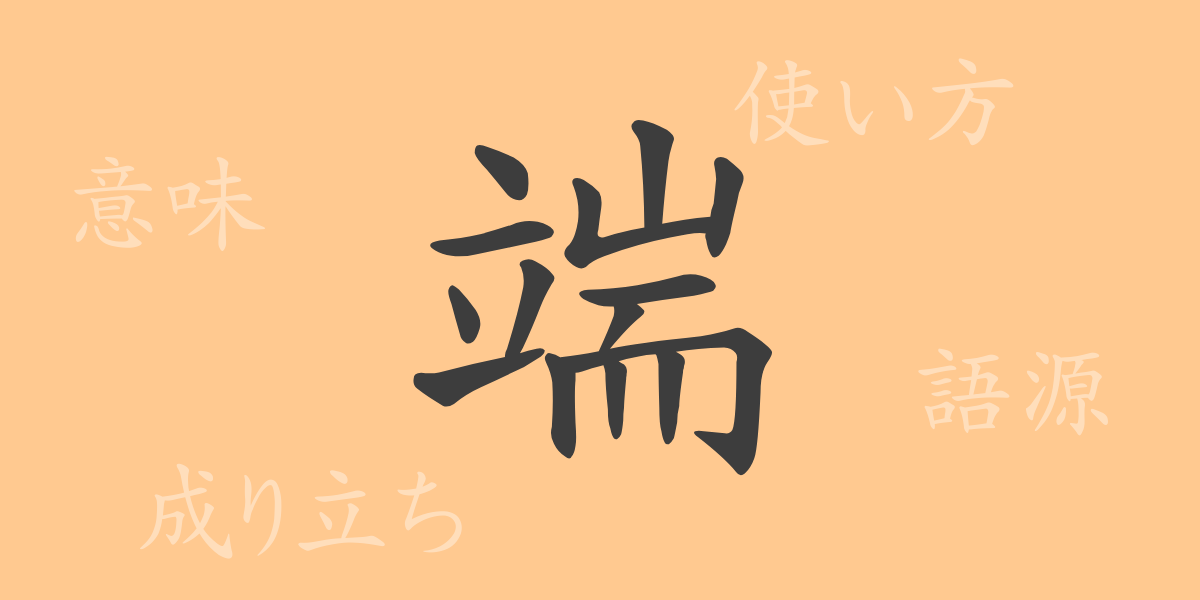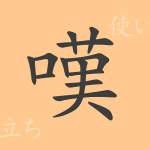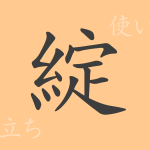The kanji ‘端’ (たん) (tan) symbolizes the depth of the Japanese language through its form, number of strokes, and the history behind its meanings. Although ‘端’ is a commonly used kanji in everyday life, few may deeply consider its origins and the variety of its applications. This article will unveil the origins of ‘端’, explore its contemporary uses, and enhance our understanding of this character and its impact on our language.
Origins of ‘端’ (たん) (tan)
The kanji ‘端’ traces back to ancient China and evolved from pictographic characters. Originally representing the edge of a cloth, it conveyed the meanings associated with the edges or remnants of fabric. This led to its use in terms such as ‘端的な’ (‘はっきりとした’) (hakkirito shita), meaning ‘clear and concise’. Additionally, ‘端’ is used to denote the beginnings or endings of things, and extreme points.
Meaning and Usage of ‘端’ (たん) (tan)
‘端’ has multiple meanings, including the ‘edge’ of an object and the ‘beginning’ or ‘root’ of a matter. It is also used in phrases like ‘端的’ (‘明確でわかりやすい’) (meikaku de wakariyasui), meaning ‘clear and understandable’, and ‘端から’ (‘初めから’ ‘そもそも’) (hajime kara ‘somo somo’), which translates to ‘from the beginning’ or ‘in the first place’.
Readings, Stroke Count, and Radical of ‘端’ (たん) (tan)
The basic information about the kanji ‘端’ is as follows:
- Readings: On’yomi ‘タン’ (Tan), Kun’yomi ‘はし’ (hashi), ‘はじ’ (haji), ‘はた’ (hata)
- Stroke Count: 14 strokes
- Radical: 立部 (たつへん) (tatsuben)
Phrases, Proverbs, and Idioms Using ‘端’ (たん) (tan) and Their Meanings
There are many idioms and proverbs that include ‘端’, each carrying unique meanings and nuances. For example, ‘端的’ (‘要点を捉えていて明快なさま’) (youten o toraete ite meikai na sama) describes a state of being clear and concise, ‘端金’ (‘小銭やわずかな金額’) (kozeni ya wazukana kingaku) refers to small change or a minor amount of money, and ‘端午の節句’ (‘こどもの日’) (Kodomo no Hi) is another name for Children’s Day. The phrase ‘端から信じない’ (‘初めから信じていない’) (hajime kara shinjite inai) means ‘not to believe from the beginning’.
Summary on ‘端’ (たん) (tan)
The commonly used kanji ‘端’, as suggested by its shape and meanings, represents the ‘edge’ or ‘beginning’ of matters and is a vital character in expressing the nuances of the Japanese language. ‘端’ appears frequently in various expressions, enriching our communication. Through this article, deepening your knowledge of ‘端’ may serve as an opportunity to rediscover the beauty of the Japanese language.

























